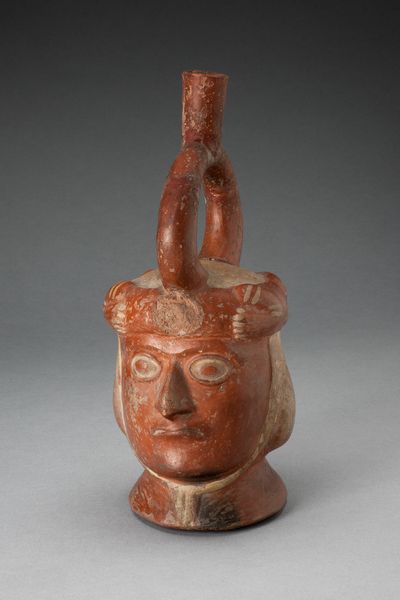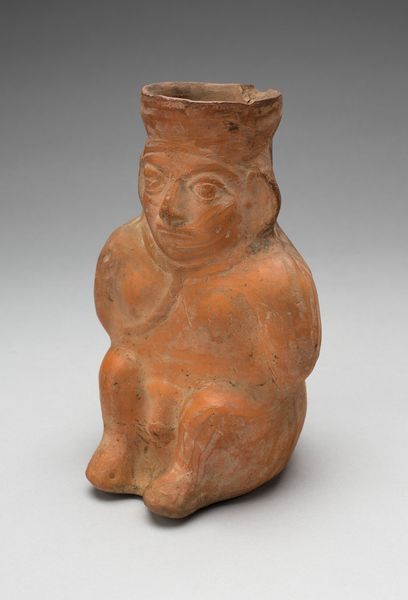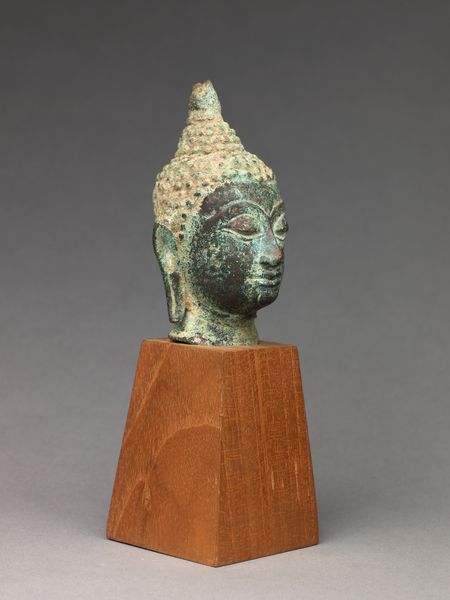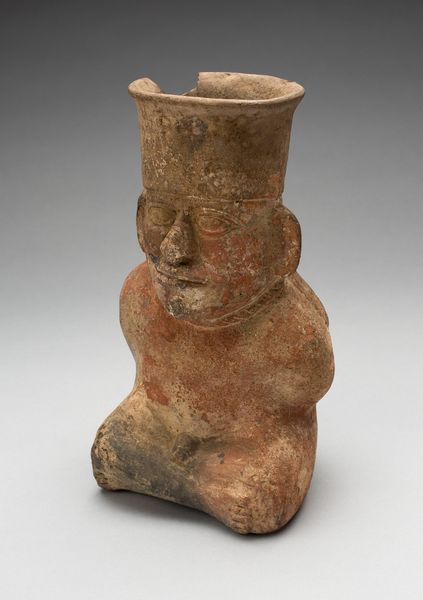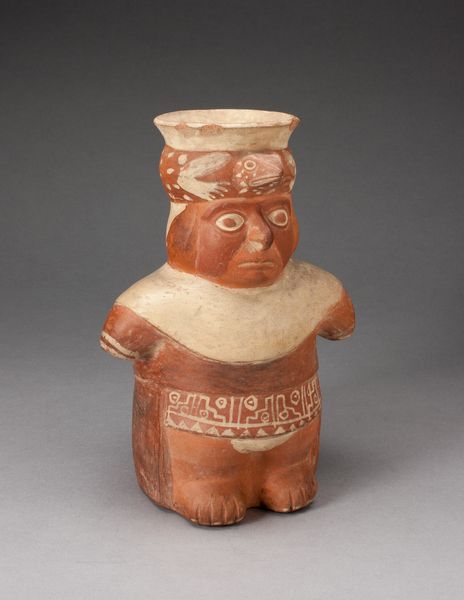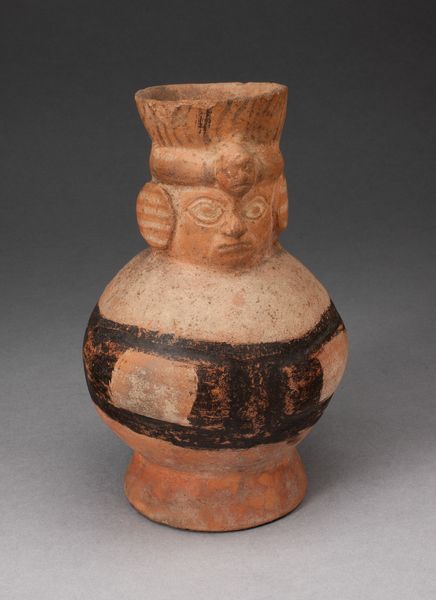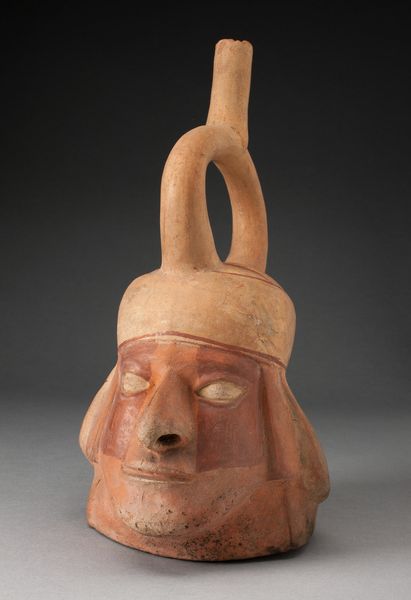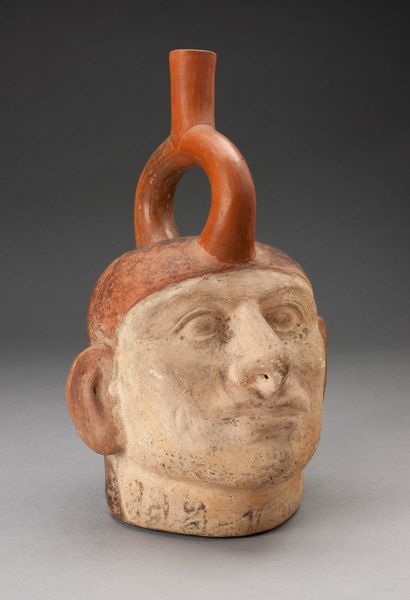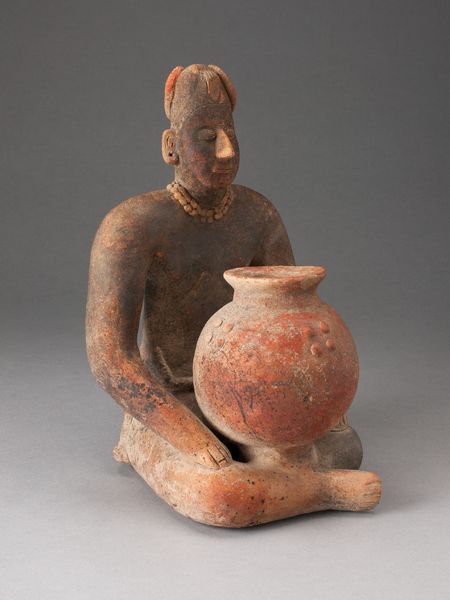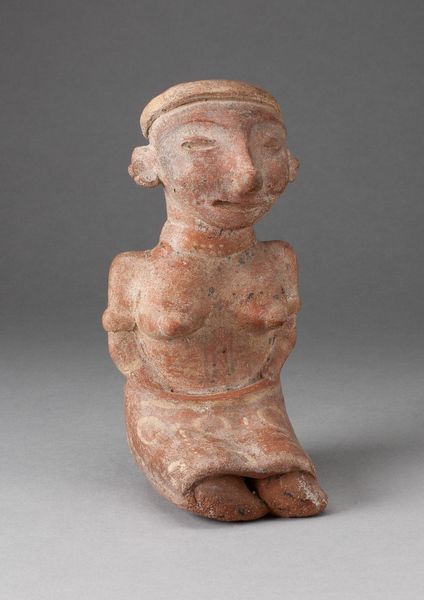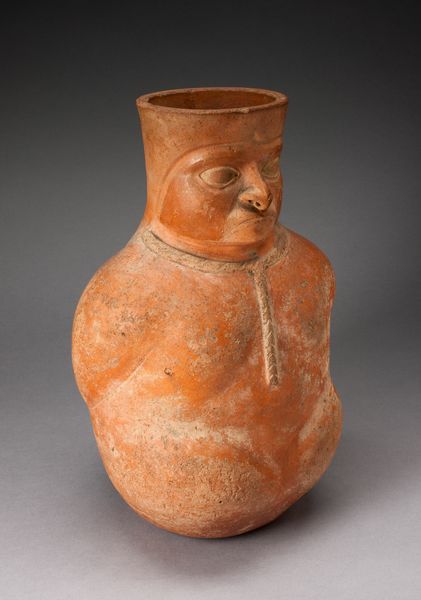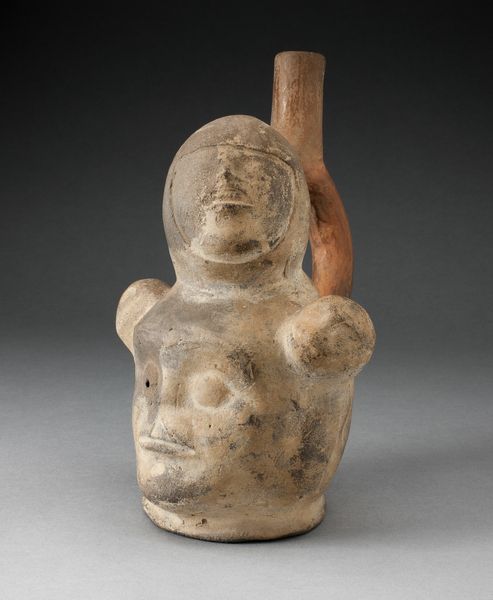
Terracotta aryballos (perfume bottle) in the shape of a woman's head 500 BC
0:00
0:00
ceramic, sculpture, terracotta
#
portrait
#
head
#
sculpture
#
greek-and-roman-art
#
ceramic
#
vase
#
ancient-mediterranean
#
sculpture
#
terracotta
Dimensions: H. 4 7/16 in. (11.3 cm)
Copyright: Public Domain
Curator: This terracotta aryballos, dating back to around 500 BC, is in the shape of a woman's head. It's currently housed at the Metropolitan Museum of Art. These small perfume bottles were common in ancient Greece. Editor: My first thought is, she looks so incredibly stern! And tiny! Is it the angle or is the container actually functional at that size? It’s simultaneously striking and unsettling. Curator: Indeed! Although seemingly small, it's worth noting the significance of perfume in ancient Greek society, particularly its association with women. Objects such as these likely reflect ideals and social structures concerning women in classical antiquity. The application of the perfume itself would become a sort of social ritual and demonstration of identity. Editor: Yes, I wonder how much agency this particular woman, whose head forms the vase, actually had in those structures. The formality of the rendering, that stylized hair—it speaks of a constrained ideal, almost a mask, not the woman herself. Do we know anything about who the 'Oxford Class' artisans were and who they were making these for? Curator: The "Oxford Class" is more of a modern grouping of these artifacts, characterized by their specific artistic features, rather than known names. But analyzing the iconography of dress, jewelry, and hairstyle helps us interpret how women were viewed in ancient Greek society, offering insights into status and cultural values regarding femininity and beauty. For example, this object certainly represents how certain women wanted to see and present themselves within their socio-political circles. Editor: It’s striking how much she embodies a very specific kind of controlled presentation, yet because it is also functional—it literally dispenses perfume, an agent of sensual allure!—that reading reveals so many tensions in what it means to perform a culturally "correct" femininity. What do you find most remarkable about this small terracotta? Curator: I find it incredible how something so utilitarian also embodies and disseminates ideas of status and social power that persisted for millennia, making her a cultural object and powerful female identifier far beyond just personal use. Editor: Absolutely, and its display in a museum today continues that tradition—another layer of context adding to the vase’s complicated story. Thanks for sharing.
Comments
No comments
Be the first to comment and join the conversation on the ultimate creative platform.
